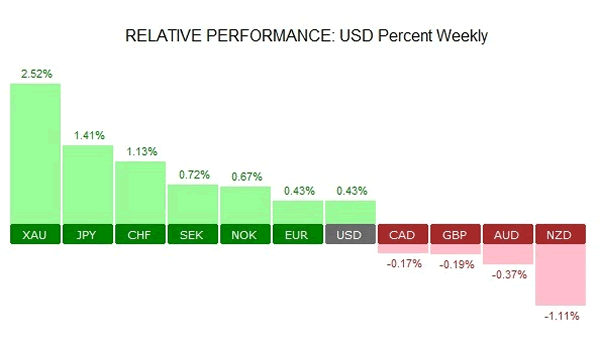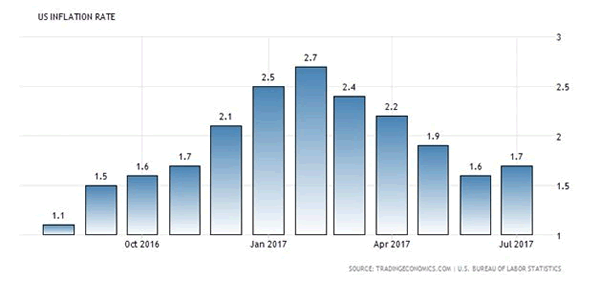The safe haven currencies returned to favor this week as mounting tensions between the United States and North Korea saw investor’s trim their risk appetite. The currencies gained despite some risks. For example, the Swiss franc which is also a sought after safe haven currency always comes the risk of the central bank intervention from the Swiss national bank.
Staying in line with his rhetoric, the US President Donald Trump said that he would hit North Korea with "fire and fury" amid facing falling approval ratings and widespread reshuffling of his cabinet. President Trump also said that he would hit North Korea with the likes that the world has never seen before.
The strong words from Trump saw an equally strong threat from North Korea which responded that it would hit the island of Guam in the Pacific. The back and forth rhetoric saw investors rushing to bonds and sending the yields lower, alongside a pick up in the safe haven currencies.
Gold, traditionally seen as a safe haven bet also posted strong gains. The precious metal rallied to a two and a half month high. Still, the precious metal remains broadly trading in a range for the past four months. Price action in gold suggests that the yellow metal is trading within the range of 1296 and 1212.

USD Weekly Performance: Week ending August 11, 2017
Investor concerns were also aptly reflected by the CBOE VIX index. Known as the fear index, the CBOE Volatility Index spiked to 15.51 by Friday’s close.
US Consumer prices rise 0.1% in July
Consumer prices in the United States rose 0.1% in the month of July. The data was disappointing as economists forecast a 0.2% increase in consumer prices. On a year over year basis, consumer prices in the U.S. are up 1.7%. The core CPI, which excludes the volatile food and energy prices was seen rising 0.1% in July. This was also below the estimates of a 0.2% increase. Core inflation is also up 1.7% on the year.

U.S. Inflation Rate YoY: 1.7% (July 2017). Source: Tradingeconomics.com
Food prices were seen rising 0.2% in July but energy prices fell 0.1%. The data showed that inflation continues to remain tame since February this year. It also puts to doubt whether the Fed will be able to continue with its rate hike plans amid slowing inflation.
The declines come as energy prices have fallen significantly after rising in 2016. In the six months ending January 2017, energy prices were seen rising 3.6% attributing to the increase in consumer prices as a result.
FOMC meeting minutes in focus
Looking ahead, the Federal Reserve will be releasing its meeting minutes from the August monetary policy meeting. The Fed did not change its language much but suggested that it would begin its balance sheet normalization relatively soon.
The markets are currently expecting the Fed to start unwinding its balance sheet as early as September. However, questions still remain on the prospects of further interest rate hikes for the remainder of this year.
The July jobs report managed to breathe some life into the interest rate expectations which managed to rise following a broadly better than expected increase in jobs as well as in wages. But with inflation data continuing to show a weak pace of increase, there is a strong chance that weaker inflation could potentially derail the Fed’s plans for another rate hike this year.
It is therefore quite possible the markets will likely brush aside any hawkish statements from the meeting minutes due this Wednsday.











